As described in a recent post, dental conditions are often hidden and painful. The following posts are going to help describe conditions that pets can get as well as treatment. Many people I talk with are surprised how we can help pets with dental conditions and save teeth whenever possible.

A common problem often found late in the course of progression, is linguoverted canines. This means the lower canine teeth (aka “fangs”) are erupting nearer the tongue and contacting the roof of the mouth.

This is another of the hidden painful conditions. If allowed to progress, two common sequela occur: a hole in the roof of the mouth (not good) and/or the lower jaw gets stuck in place and cannot grow appropriately during puppyhood resulting in misalignment that can have pain and crowding progressing to infection. Skeletal maturity is reached often near 10 month of age in dogs making the jaw less likely to continue to grow. Treatments can still be done but none will result in correction of all alignment. The sooner this problem is found and treated, the more likely the body will correct itself.
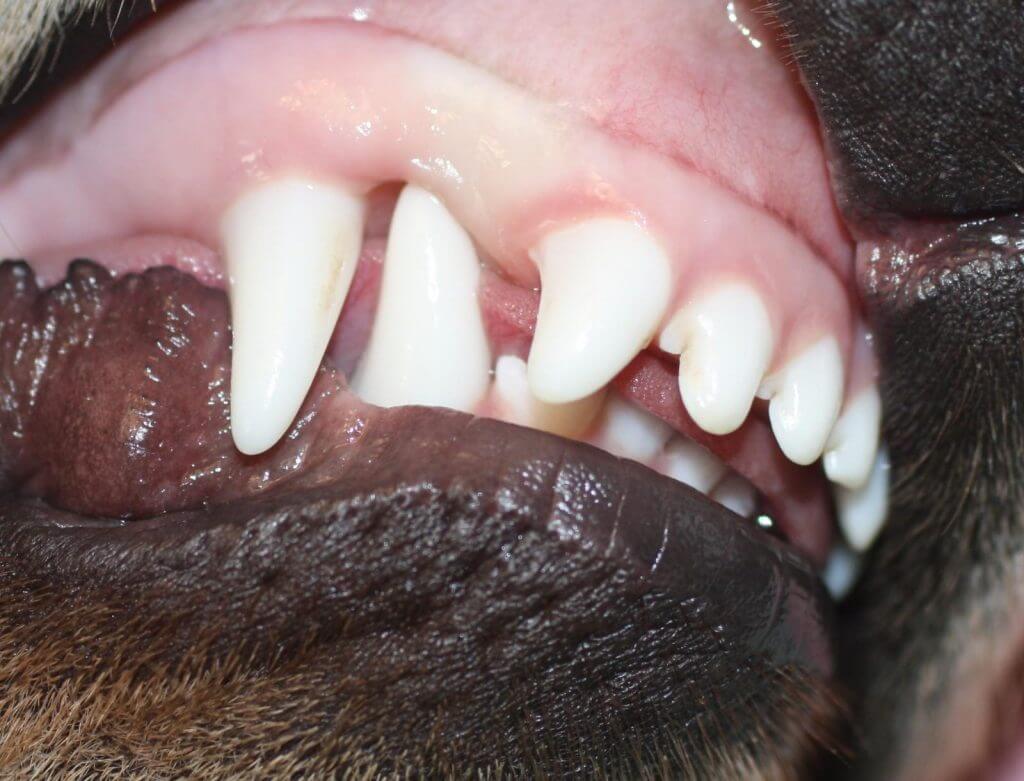
Sometimes we use incline planes to change the angle of the tooth naturally as a dog bites down. This is usually placed for 3-6 weeks. After the acrylic is removed the surrounding soft tissues are irritated but heal up in just a few days.
Other times we are fortunate to be able to just use acrylic composites to extend the length of the canine tooth, helping the tooth to tip into the correct position.
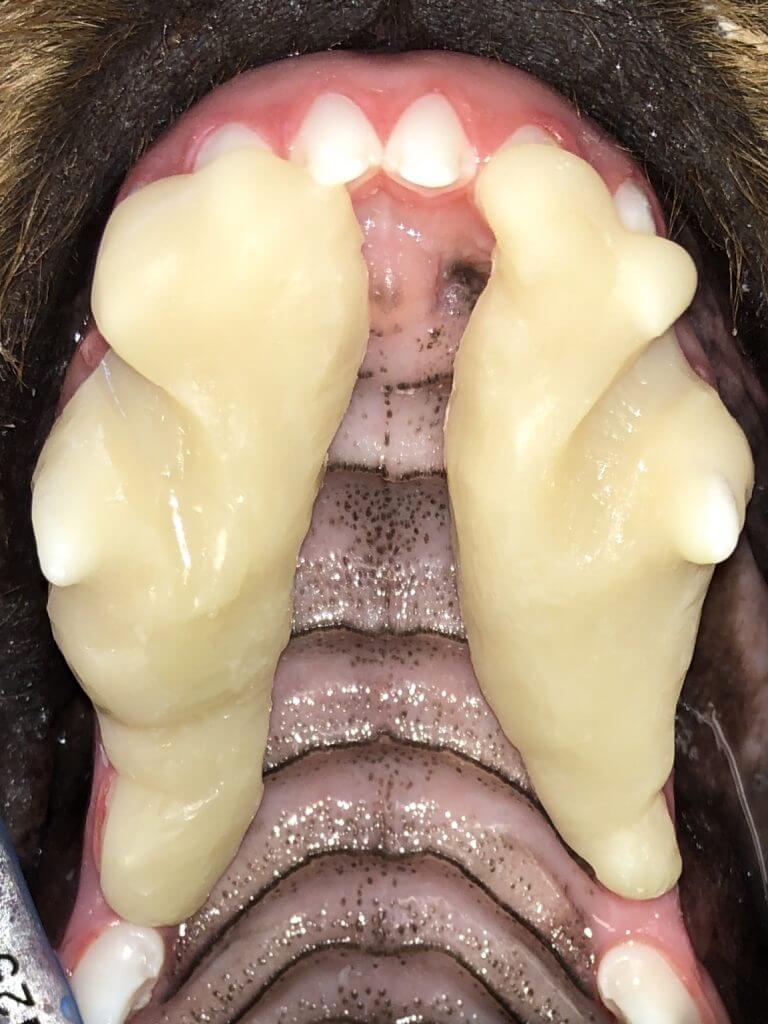
If a patient will not tolerate one of the above treatments, or is an anesthetic risk requiring a single procedure, an intentional crown shortening can be performed with a vital pulp therapy (miniature root canal therapy) to save the shortened tooth. It is always better and usually more successful to keep the full normal tooth structure when possible, thus vital pulp therapy is not a first choice treatment.
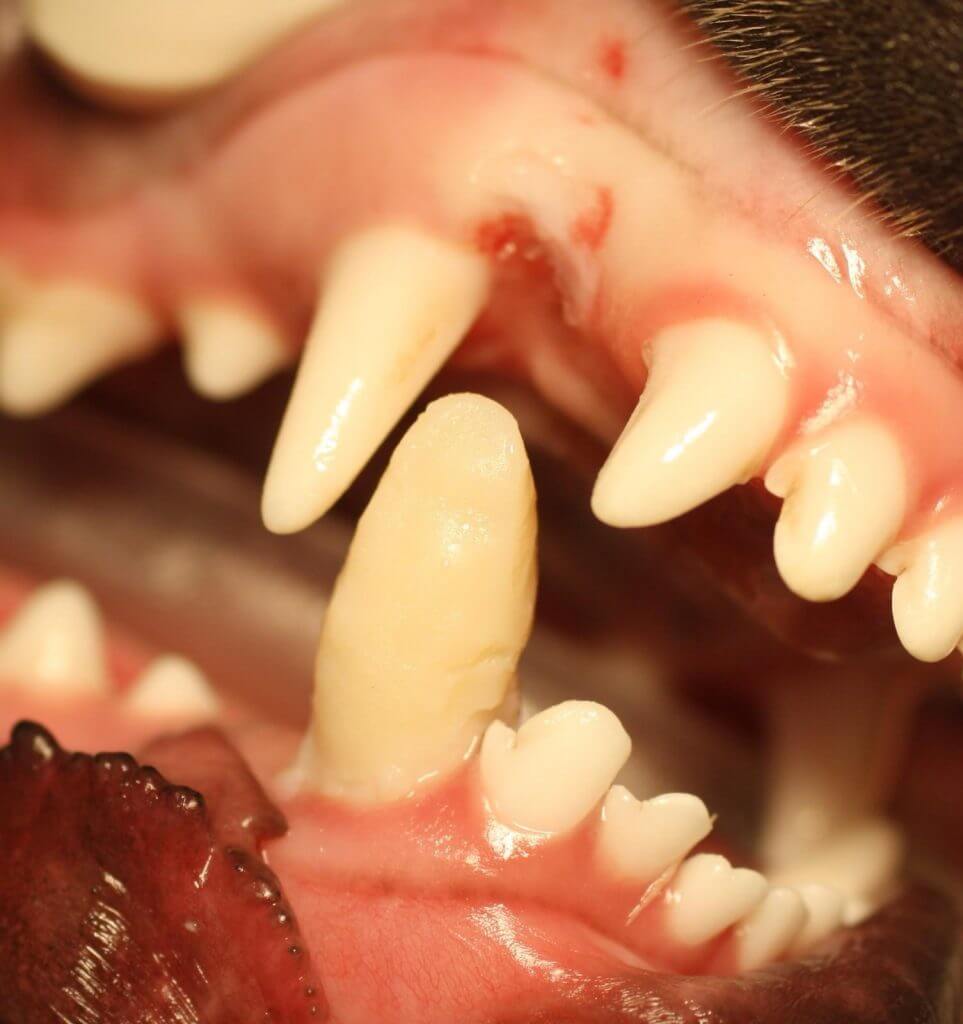
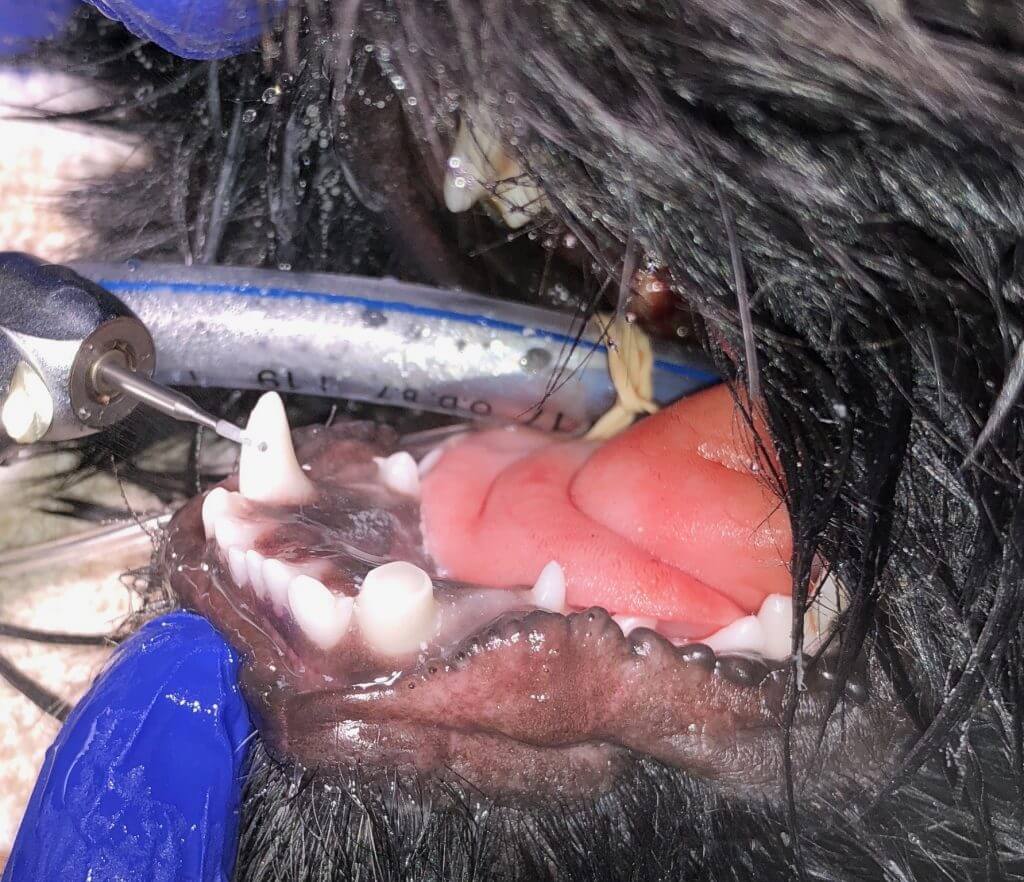
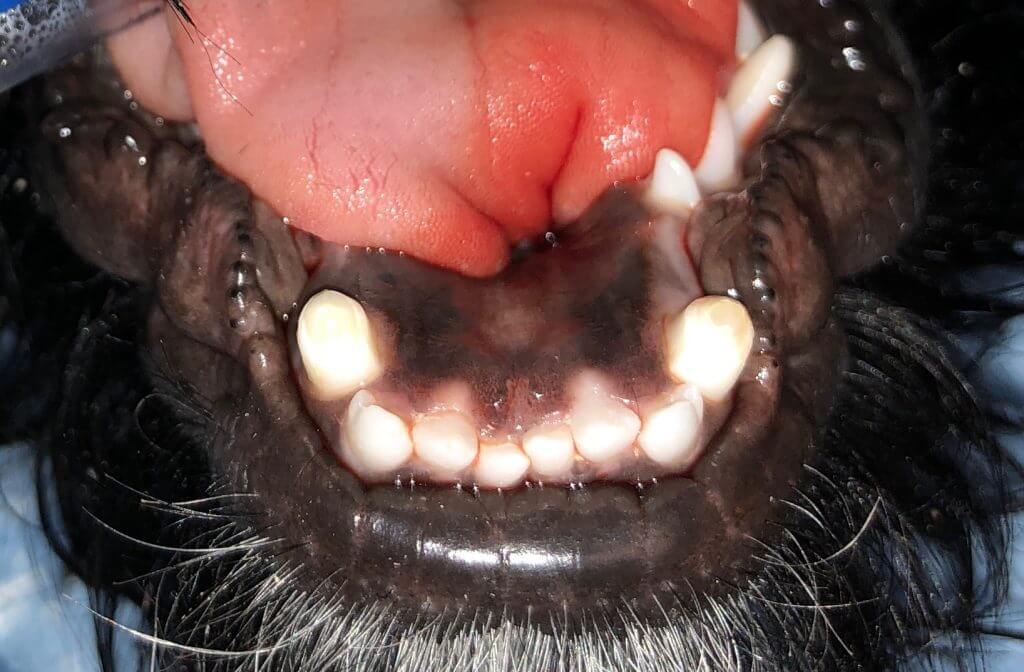
Occasionally this condition is mild and will be caught very early thus is corrected with only extraction of the baby teeth and recontouring of the gumline:
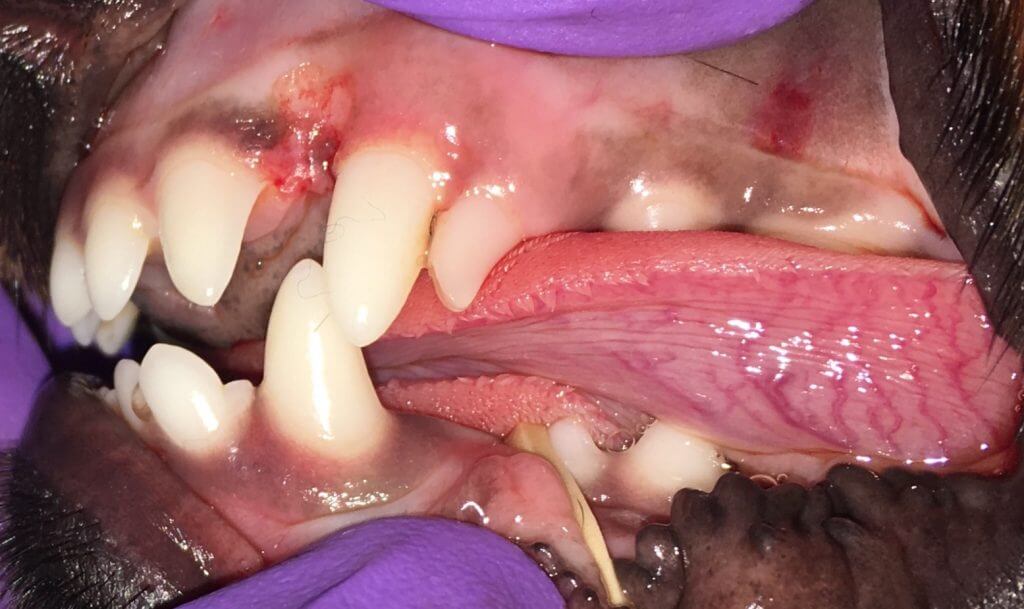
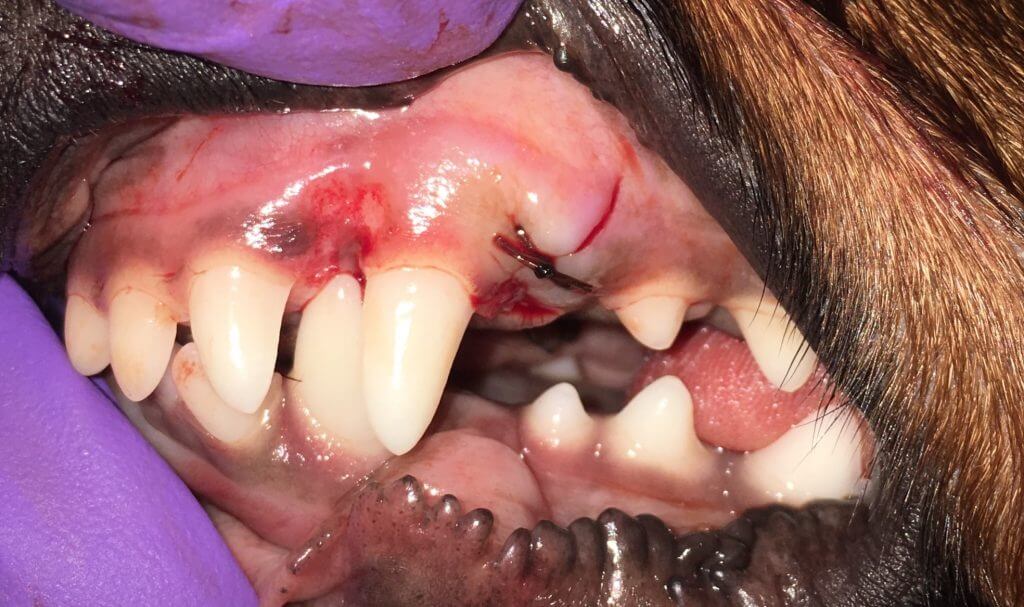
This is usually a genetic condition and breeding a pet after one of these procedures is unethical due to the risk of passing this condition on to offspring.
